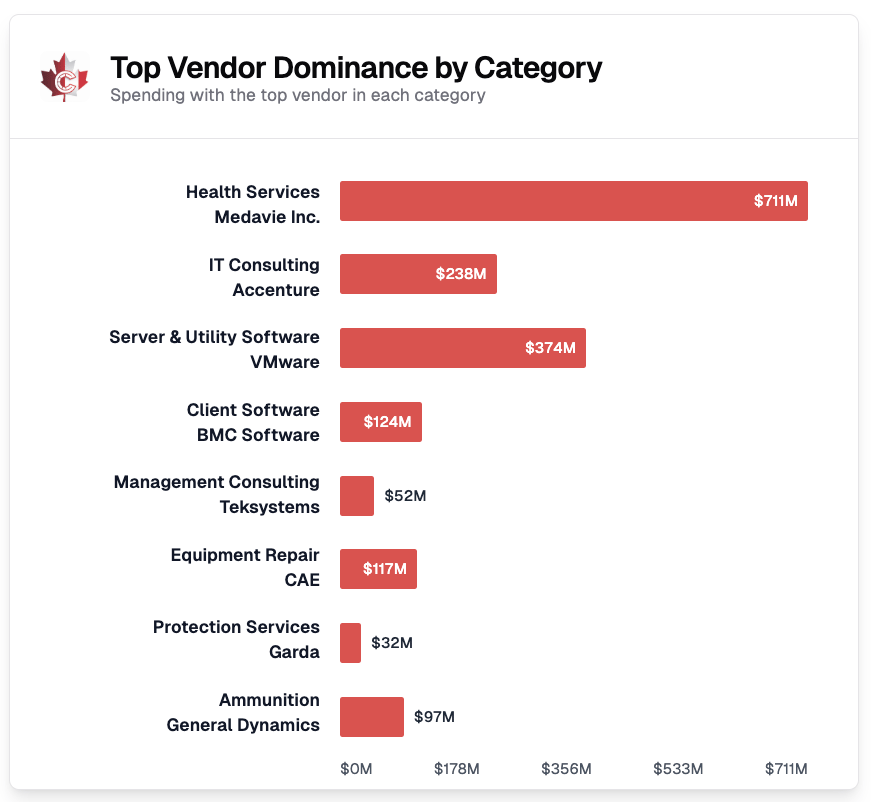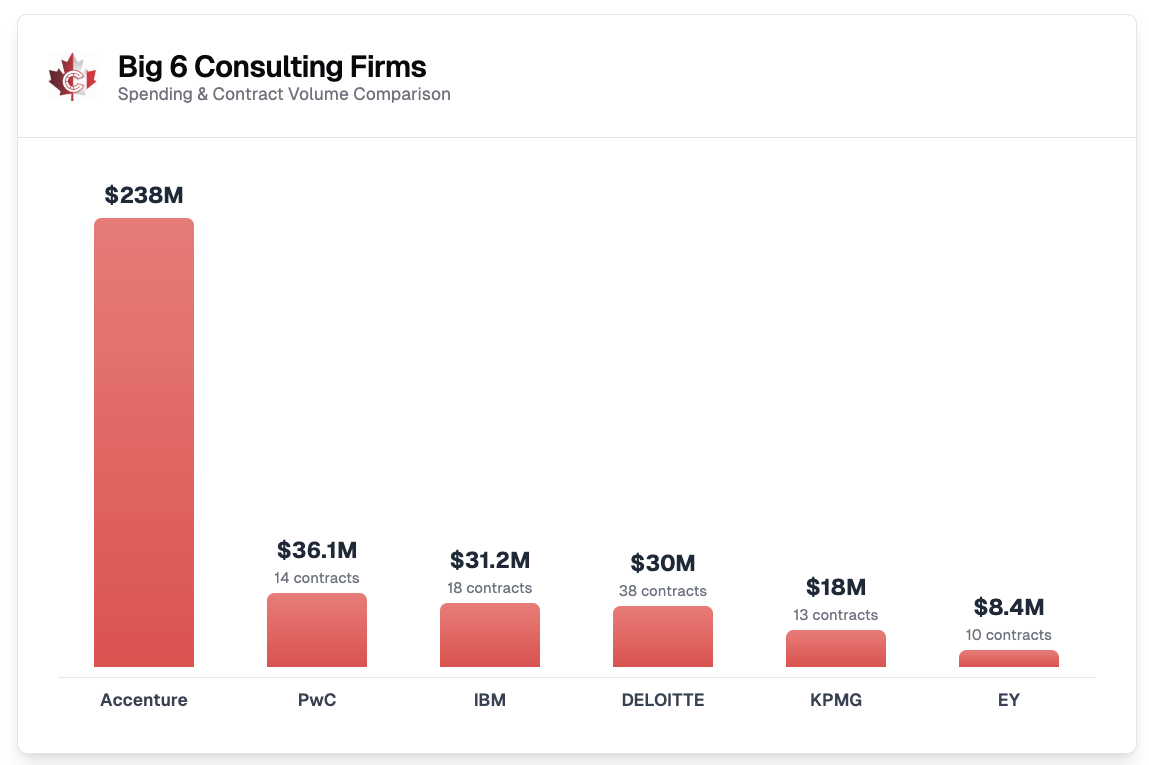- GovCon Weekly
- Posts
- It's Not Just You: The 2025 Procurement Collapse
It's Not Just You: The 2025 Procurement Collapse
Canadian Procurement Pulse: Mid-Year Spending Analysis
If you've noticed government contracting feels tighter than ever, you're not imagining it. Even after excluding the massive shipbuilding contracts (which alone accounted for roughly 75% of all spending), the picture remains stark: spending in core procurement areas has dramatically shrunk.
While health services enjoyed a windfall thanks to one colossal Veterans Affairs contract, contractors in traditionally lucrative sectors like IT and management consulting are facing an unprecedented squeeze. The underlying message? Canada's government is clearly tightening budgets and doubling down only on essential spending.

Overview: Dramatic Contraction Beyond Shipbuilding
Excluding the nearly $15 billion in shipbuilding contracts, procurement spending across other sectors has significantly contracted:
IT and Telecommunications Consulting: Down approximately 50%, totalling $622M
Management Consulting: Dropped sharply by around 73%, standing at just $199M
These figures highlight just how cautious government buyers have become in traditional spending categories.
Who’s Thriving and Who’s Barely Surviving
IT Consulting Shake-Up:
Vendor | Contracts | Total Value ($M) | Market Share |
Accenture | 12 | 238 | 38% |
Kyndryl | 2 | 133 | 21% |
Teksystems | 34 | 34 | 5% |
Deloitte | ~30 | 30 | <5% |
Accenture and Kyndryl dominate nearly 60% of the shrinking IT consulting market.
Legacy Tech's Persistent Grip:
BMC Software maintains a commanding position with a $124M share, benefiting from decades-old contracts and government inertia in IT infrastructure. Genuinely
Vendor Dominance Across Key Categories:

Departmental Spending Priorities:
Department | Spend ($M) | Top Vendor | Focus Area |
Veterans Affairs | 714 | Medavie Inc. | Health Services |
Employment & Social Development Canada | 273 | Accenture | IT Modernization |
Public Services & Procurement Canada | 224 | Pomerleau Inc. | Construction |
Fisheries & Oceans Canada | 193 | Cache Computer Consulting | Infrastructure Maintenance |
Departments have clearly shifted focus to projects deemed mission-critical, significantly cutting discretionary spending.
Big Six Consulting Firms: Survival of the Fittest

Competition Reality Check: A surprising amount of government spending this year has been non-competitive, highlighting the degree to which procurement has focused on essential maintenance, renewals, or highly specialized requirements. For instance, software licensing and ammunition procurement were notably non-competitive (over 50% and 80%, respectively), underscoring vendor lock-in and specialized supplier dependence.
The End-of-Fiscal-Year Rush: As always, the first quarter of 2025 saw an intense spike in procurement activity, capturing a staggering 99.7% of total annual spending. The annual pattern of rushing to spend budgets before fiscal year-end is not new, but this year's spike is particularly acute, reflecting extreme caution and delayed spending decisions throughout the rest of the year.
Key Insights for Contractors in the Second Half of 2025:
Core Focus Areas Are Key: Contractors should pivot towards essential areas like health services, IT modernization, and critical infrastructure.
Cautious Optimism: Signs point to moderate recovery in procurement spending, but remain cautious.
Legacy Vendors Remain Formidable: Long-established companies like BMC continue to leverage entrenched relationships, posing challenges for new entrants.
Diversify, FAST: Can’t rely on the federal government anymore. Contractors should look to sell to other levels of government who are less focused on trimming the fat this summer.
Conclusion: Procurement's New Normal
The contracting landscape in 2025 reflects a clear reality check. With huge chunks of spending consumed by major projects like shipbuilding, what's left is fiercely competitive and closely scrutinized. Contractors must strategically position themselves around indispensable projects, proactively adapt to tighter budgets, and remain agile in response to shifting priorities. This is the "new normal"—more strategic, leaner, and tougher to navigate, but filled with opportunities for those willing to adapt quickly.
Looking for more data on the situation? Respond to this email and I am happy to share our full analysis on 2025.